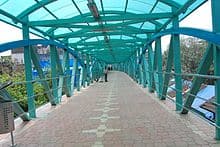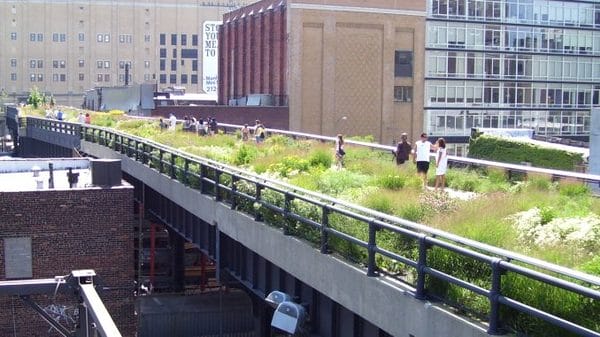When an overhead walkway built by Ecospace was recently opened to public, residents of Outer Ring Road greeted it with joy. It made crossing the ORR so much safer and seemed to reduce congestion caused by vehicles slowing to let jaywalkers cross.
Though India had a strong tradition of pedestrian-centric cities, it is deplorable that post-1970, cities in India have rarely been designed for pedestrians.
Reviewing the list of ten most accident-prone areas in Bangalore, Citizen Matters found that the predominant factor for accidents was pedestrians crossing the road in the midst of high speed traffic. With the absence of pedestrian skywalks and lack of security in subways, the pedestrians are left with no choice but to risk their lives.
When the Bangalore Development Authority (BDA) looked to build 25 skywalks on Outer Ring Road, they got no bids or expressions of interest! Bengaluru’s city corporation, the BBMP had also opened up tenders for 54 skywalks across the city. Most of them are yet to take off.
In most cases, contractors don’t bid for the projects because lifts and escalators required to incentivise usage of the skywalks push up the cost. Many contractors say it is not financially viable to make money just through the advertisement displays.
On the other hand, the problem with pedestrians is that they lack motivation to climb up and down spending that extra time and effort – they often decide to risk their lives dashing across the streets. Plus stairs are very inconvenient to manage especially for the elderly.
Other than the Mumbai pedestrian Walkway Project with more than 35 walkways commissioned, there are few examples of successful walkways in India. The 1.3 km Bandra Skywalk, completed in June 2008 is said to be used by over 1 lakh pedestrians daily.

Mumbai Vasai Walkway (Courtesy: Mumbai Metropolitan Region Development Authority (MMRDA)/Wikipedia)
We hereby propose an approach that can make more walkways happen. Using this approach, the supply side (developers and contractors) and the demand side (pedestrians) can both be incentivised to realise a pedestrian friendly future.
- BBMP should invite real estate developers to build underground or overhead walkways for pedestrians. Such developers whose developments are situated next to the walkway entry/exit should especially be invited.
- Additional air-rights can be built up as part of the walkway – the private developer can rent this out as commercial space for retail and food outlets. For example, Darshinis, Coffee shops or small department stores that people on the go can use for quick purchases.
- Sections of overhead walkways can be left open for gardens and open-air cafes.
- The ramps and escalators need to be integrated with private properties and accessible by public. For example, Ecospace builders can provide the access at a spot at the front edge of their property. The access ramp for their own users can begin or end within the IT park.

New York’s High LIne has parks and greenery, enjoyed by those living or working nearby. Credit: Wikipedia
A planned pedestrian network needs to be envisioned along the IT corridor and other points on ORR. Instead of ad hoc footbridges, pedestrians can be encouraged to walk along an overhead network of planned pedestrian walkways and activities that are integrated with private developments. This can encourage walking and open up even more retail space within private developments.
Tenjin Underground City in Chūō-ku, Fukuoka, Fukuoka Prefecture, Japan. Pic: Wikimedia Commons (user:JKT-c)
A great example of this is Hong Kong’s network of streets above ground level. There will be no obstruction to the vehicular traffic as only pillars for the overhead walkways will be built on road medians. Of course, safety standards have to be adhered to and emergency plans put in place for natural disasters like flooding, earthquake, fire etc.
In terms of funding, the private sector needs to be attracted with (a) several revenue streams that can be leveraged for funding, (b) low cost finance. The government agencies need to cross-subsidise public infrastructure with incentives such as developable air rights, advertising rights and low cost finance. The above-listed points take care of the revenue streams for private developers (i.e., through rentable commercial space, advertising space along walkways). BBMP, however, must use such projects to conceptualise creative finance strategies along with infrastructure financing banks to provide low-cost funding to developers for such infrastructure projects.
This can take care of funding for such walkways and ensure they are well maintained too, while developers get access to extra real estate space to offset their investment.
